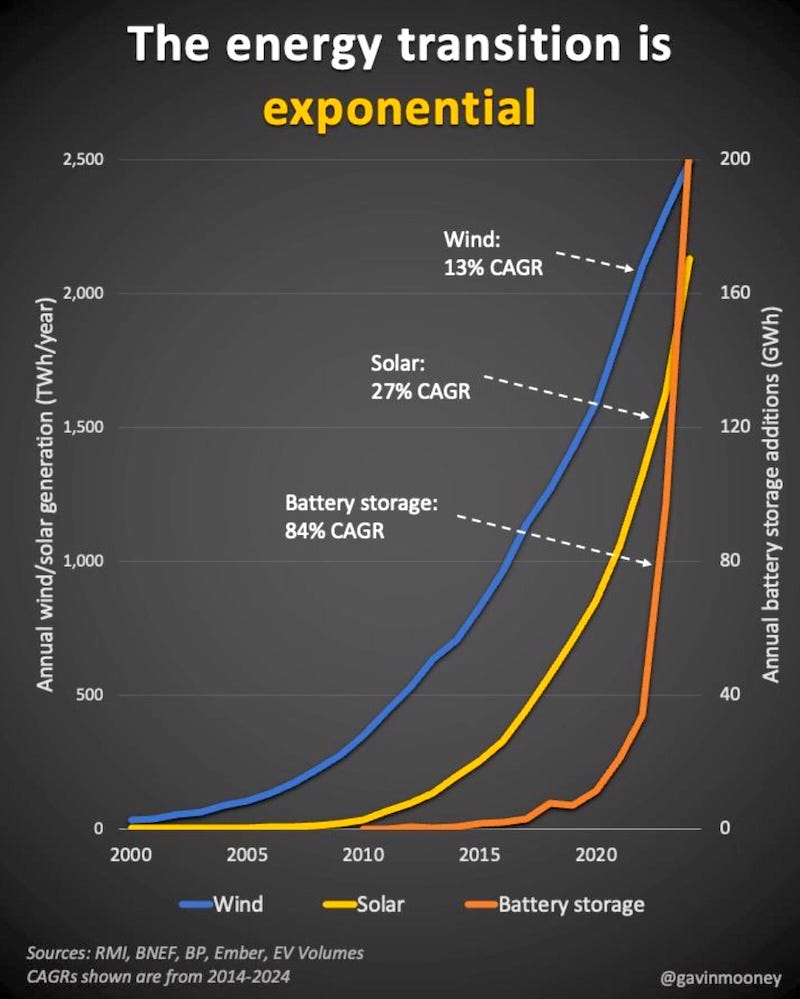Sovereignty, Security, Sustainability: Say One Thing, Do the Other
When provincial climate policy becomes a performance piece, why should we expect words to mean what they're supposed to? When it all goes wrong, they'll always have the feds to blame.
It’s a dynamic that is probably as old as Canada itself, maybe as old as the less savoury side of human nature: Make big promises, take the easy way out, and let someone else shoulder the blame when it all falls apart.
It’s a big part of the climate politics we’ve seen over the last decade, with too many politicians of all stripes and at all levels of government putting performative theatrics over action and results.
Now we can see at least three provincial governments setting up for more of the same, each in its own way, just when the climate emergency and a bucketful of intersecting crises demand something smarter, better, more substantive. And at a moment of opportunity when a new federal government is making big promises to “do things we haven’t imagined before, at speeds we didn’t think possible.”
The question for the premiers of Alberta, Ontario, and British Columbia is whether to pull together on a made-in-Canada response to the climate emergency as though everything depends on it (because it does). Or carry on with the same old system where the quickest, most affordable path is the last one anyone ever considers. If they consider it at all.
So far, the answer for three of our most influential provinces is revealing itself in a three-act play. And the prospects don’t look great.
Act 1: A Sovereignty Act that Isn’t
Granted, the competition is tough. But it’s hard to imagine a Canadian politician anywhere who can match Alberta Premier Danielle Smith for theatrics.
From the moment Smith introduced her Alberta Sovereignty Act in November, 2022, there was little doubt what brand of sovereignty she had in mind. The language played to a base of United Conservative Party supporters who would buy her line that federal policy is the only thing standing in the way of a forever boom in Alberta’s fossil-driven economy—despite tens of billions of dollars’ worth of evidence to the contrary. The details played to the advantage of the fossil industry that hired her as a lobbyist, then showered her party with donations after she re-entered the provincial legislature.
Now, “sovereignty” means a new “mature assets” strategy that could leave Alberta taxpayers and communities paying billions to clean up the industry’s abandoned oil and gas wells, paired with a moratorium and regulatory barriers that are driving investors away from a provincial renewable energy sector that once led the country in new installations.
All in defence of an economic strategy that hooks Alberta jobs and Canadian prosperity to a global market for fossil fuels on the verge of decline, where the only thing we know about prices is that they won’t be predictable.
We get to see Smith heroically invoking the Sovereignty Act to fight off a set of common-sense federal electricity decarbonization regulations that had already been watered down and delayed. Vilifying an oil and gas emissions cap that allows the industry’s climate pollution to rise unimpeded until 2032. Then watching her government’s budget projections wither against another round of low oil prices, driven lower still by the actions of the U.S. president she worked so hard to placate while the rest of us were getting our #ElbowsUp.
It's hard to see how our continuing dependence on a sputtering oil and gas economy will make it easier for Canadians to credibly assert our sovereignty, or for Smith’s radical fringe in Alberta to try to falsely assert theirs. But you can bank on it: When Smith’s trumped-up promises (yes, the adjective is deliberate) begin to evaporate, she’ll surely find a way to make it Ottawa’s fault.
Act 2: An Energy Security Plan that Delivers Neither
The recent politics have been less hostile in Ontario, where Conservative Premier Doug Ford was accused of “sabotaging” federal Conservative Opposition leader Pierre Poilievre rather than his Liberal opponent in last month’s federal election. Now Ford’s government is using federal tax credits to prop up a nuclear construction venture that will cost more than competing energy sources and leave the province more vulnerable to a suddenly predatory United States.
This week, the province announced a plan to build four small modular nuclear reactors (SMRs) on the site of the existing Darlington generating station near Bowmanville, on a timeline and budget that many independent observers consider hopelessly optimistic. The published cost of the project is $7.7 billion for the first reactor, including $1.6 billion for infrastructure and administrative buildings, and $20.9 billion to complete the series of four.
Energy and Mines Minister Stephen Lecce declared the 1,200-megawatt installation, the first of its kind in the G7, a “nation-building project being built right here in Ontario.” Durham MPP Todd McCarthy called it “the next step to strengthening Ontario and Canada’s energy security.”
So let’s get this straight. The province that made bold noises about electricity exports to the United States in response to Donald Trump’s economic warfare will now make a solid chunk of its own power supply dependent on enriched uranium from the U.S. state of New Mexico.
“Developing a dependence on another country for our nuclear fuel has always been a concern and recent events have proven those concerns are justified,” Bob Walker, national director of the Canadian Nuclear Workers’ Council, told the Globe and Mail in February.
It’s hard to see where the Ford government found the warped cost estimates that allowed it to justify a project that is still considered too pricey to compete in world markets—which are increasingly dominated by renewable energy and storage options that are cheaper and faster to deploy.
The Darlington New Nuclear Project, as it’s called, “is being watched closely by utilities around the world, many of which have dispatched representatives to visit the site,” the Globe reports. “But the costs published Thursday are higher than what independent observers argue are necessary to attract many more orders. For comparison, a recently completed 377-megawatt natural gas-fired power station in Saskatchewan cost $825-million.”
Wind and solar with battery backup are cheaper still with each passing day.
Ed Lyman, director of nuclear power safety at the Cambridge, MA-based Union of Concerned Scientists, called the Ontario estimate “an eye-popping figure, but not unexpected given what we know about the poor economics of small nuclear reactors,” positioning the Darlington facility as “a boutique unit that’s going to produce electricity for a very expensive price.”
Koroush Shirvan, a professor of energy studies at the Massachusetts Institute of Technology‘s nuclear engineering program, said the announcement confirmed past research findings, including his own, that SMRs “will never be able to approach a large reactor” in cost per kilowatt of capacity.
Critics are already questioning whether field experience with four individual SMRs will be enough to drive down production costs from $6.1 billion plus surrounding infrastructure for the first unit to a range of $4.1 to $4.9 billion for the next three. Even before the inevitable project delays and budget overruns begin to mount up, the estimated price of the project has already ballooned. And Ontario’s latest estimate is well below the price tag for a similar project undertaken by the Tennessee Valley Authority—a difference that might have to do with a federal investment tax credit that picks up 30% of the cost of clean energy projects, with a definition that unfortunately includes nuclear energy.
An independent study released this week by the Ontario Clean Air Alliance found that the Darlington SMRs will cost up to eight times as much as onshore wind, almost six times as much as utility-scale solar, and 2.7 times as much offshore wind in the Great Lakes after factoring in the federal tax credit. The analysis by Hinesburg, Vermont-based Energy Futures Group “used data from Ontario’s Independent Electricity System Operator but used realistic real-world capital costs and performance measures to develop a more accurate comparison of the cost of nuclear and renewable power options,” OCAA writes.
“Why would we spend many, many times more for power from risky reactors rather than doing what the rest of the world is doing and fully develop low-cost renewable power?” the Toronto-based advocacy group asks in an email to supporters. “Remember, Ontario has not contracted for a single kilowatt-hour of new wind and solar electricity during [the] last seven years while use of solar, in particular, has skyrocketed in much of the rest of the world.”
So while Ford’s angle of approach in Ontario is far different from Smith’s in Alberta, Act 2 of this three-act play is where we learn that not everything is necessarily as it seems. New nuclear plants are clearly an option on the federal agenda, but Ontario is now on its way to proving that they won’t deliver the quick, affordable power supplies the province needs.
Act 3: Sustainable By Name, Not By Nature
British Columbia likes to pride itself on being a Canadian climate leader, and the province can certainly point to successes like its energy efficiency Step Code and recent clean power procurements. But a determined, cross-partisan obsession with building up a liquefied natural gas (LNG) industry—despite the methane footprint of gas production, and in the face of a shaky and declining global market for gas exports—is clouding its green mystique.
Between the lines, B.C. admitted as much late last month, with the release of the annual emissions inventory required under the provincial Climate Change Accountability Act. “The purpose of the report is to be absolutely clear on these points that we are not on track to meet our near-term 2030 goals,” admitted Energy and Climate Solutions Minister Adrian Dix.
“It’s huge. We’re not even coming close,” said B.C. Green Interim Leader Jeremy Valeriote. “If we missed our targets by this much on education, or health care, or any other aspect of public life, people would be outraged.”
The province earned some praise from outside observers for basing this year’s accountability report on actual emission reductions, rather than projected results from programs under development. But the actual numbers were pretty awful. Overall climate pollution fell by just 2.2% between 2007 and 2022. Oil and gas emissions were down 11%, compared to a 2030 target of 33 to 38%.
The report held out the faint hope of “modest emission reductions” in LNG production through methane controls and upstream electrification. But it warned that those projections “are not without uncertainty,” given that a number of “unaccounted for risks may affect B.C.’s ability to more significantly reduce emissions.” That list included emissions from “new large industrial projects”, in what amounted to an acknowledgement that project developers will do what they’re going to do, unimpeded by provincial climate targets.
Right on cue, and matching the spirit of Carney’s line about moving “at speeds we didn’t think possible,” the provincial government introduced legislation that would allow it to fast-track selected projects, potentially including climate bombs like new LNG terminals or pipelines.
Let’s Get Our Act Together
Of the three provincial premiers in this performance piece, Alberta’s Smith has put by far the most political capital into overtly brawling with the feds. She picks fights at every step, launches lawsuits and threatens a separatist referendum with a kind of patented recklessness. But there’s a secondary effect that is almost as dangerous: when one premier with an over-active sense of persecution takes up so much of the oxygen, it makes it easier for everyone else to look measured and reasonable by comparison.
There’s nothing measured about squandering tens of billions on nuclear technology that has never been built or demonstrated in the real world, nothing reasonable about tacitly accepting that future LNG development will keep on defeating a province’s declared emissions targets.
Those are factors our new federal government will want to take into account, unless it intends to share the blame when three of our most influential provinces fall far short of their climate promises, and Canada inevitably falls short as a result.
Mitchell Beer traces his background in renewable energy and energy efficiency back to 1977, in climate change to 1997. Now he and the rest of the Energy Mix team scan 1,200 news headlines a week to pull together The Energy Mix, The Energy Mix Weekender, and our weekly feature digests, Cities & Communities and Heat & Power.
Chart of the Week

Alberta Follows Familiar Playbook to Help Fossils Sidestep Well Cleanup Obligations
Canada Has the Critical Minerals Donald Trump Wants. So What Should We Do With Them?
Trump Promised to Help Big Oil. Its Revenues Plummeted.
E-Bus Maker Lion Electric Faces Liquidation After Quebec Refuses Further Investment
RBC Abandons Green Finance Goal, Could Trigger ‘Domino Effect’
Ex-UK PM Tony Blair Purveys ‘Hopelessly Conflicted’ Climate Misinformation
Scientists Just Found a Way to Break Through Climate Apathy
McGill Platform Becomes Safe Space for Conserving U.S. Climate Research Under Threat
New Liberal government should scrap EV tariffs on China to help trade, climate goals, say critics (Canadian Broadcasting Corporation)
Let’s judge Ontario’s mineral development by what is protected — not just extracted (Toronto Star)
B.C. company wants to open $300M made-in-Canada sand mine to fuel anticipated fracking, LNG boom (Canadian Broadcasting Corporation)
Australia lays out red carpet for rapid green energy transition. Can Labor seize the moment? (RenewEconomy)
Texas renewables restrictions could increase power prices by 14% in 2035 (Utility Dive)
U.S. renewable energy has tripled in a decade – but almost $8B in projects now face cuts (The Guardian)
Rewiring America Slashes Staff Due to Trump Funding Freeze (Heatmap)
After LA fires, could it be cheaper and faster to rebuild without gas? (Canary Media)
In climate science, the U.S. is now a rogue state (Financial Times)
Trump has cut global climate finance. China is more than happy to step in. (Washington Post)
Stopping Enforcement of Appliance Standards Would Bring Inferior Products with Big Costs (American Council for an Energy Efficient Economy)
One good thing the US government has done: putting Shein and Temu out of business. (Carbon Upfront!)








Thanks for this, Stewart. I think you're right on that the existential threat will be the top priority until it's under control. But what if electrifying everything is a cornerstone of building the secure economy and society that can withstand the external threat?
https://energymixweekender.substack.com/p/decision-time-one-energy-path-brings
Say yes, to everything you said. On the other hand, the previous government heavy push on electric vehicles has left many voters with a sour taste in their mouths. except buildings and promises to Battery and manufacture implants that failed to be built, and EV batteries that have not been constructed.
Facing an existential threat as a country, major decisions on electrifying everything aren't the top priority.
At least, that's how I see it.